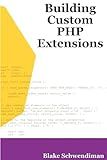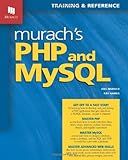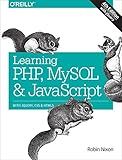Best PHP Extensions for Efficient Development to Buy in December 2025

Building Custom PHP Extensions
- AFFORDABLE PRICES ON QUALITY USED BOOKS
- ECO-FRIENDLY CHOICE: REDUCE WASTE WITH PRE-OWNED READS
- UNIQUE FINDS: DISCOVER RARE TITLES AND HIDDEN GEMS



Learning Joomla! 3 Extension Development-Third Edition



Murach's PHP and MySQL: Training & Reference
- SAME-DAY DISPATCH FOR ORDERS BEFORE 12 PM-FAST DELIVERY!
- MINT CONDITION GUARANTEE ENSURES TOP-QUALITY PRODUCTS!
- HASSLE-FREE RETURNS FOR COMPLETE CUSTOMER SATISFACTION!



OpenCart 4: Dev Guide for Themes & Extensions: Unlock the Potential of OpenCart 4: Master Theme, Extension Development, and Docs for Developers



Learning PHP, MySQL & JavaScript: With jQuery, CSS & HTML5 (Learning Php, Mysql, Javascript, Css & Html5)



WordPress - Développez avec PHP - extensions, widgets et thèmes avancés (4e édition)



WordPress - Développez avec PHP - extensions, widgets et thèmes avancés (théorie, TP, ressources) (3



Drupal 8 Module Development: Build and customize Drupal 8 modules and extensions efficiently


To install the Redis extension in PHP, you need to follow these steps:
- Start by checking if the Redis extension is already installed on your system. Open a terminal or command prompt and run the following command: php -m | grep redis If the Redis extension is already installed, you will see "redis" in the output. You can skip the installation process in this case.
- If Redis is not installed, you need to install it using the PECL repository. PECL (PHP Extension Community Library) is a repository for PHP extensions maintained by contributors. Run the following command in your terminal or command prompt to install Redis via PECL: pecl install redis If you encounter any errors related to missing dependencies, you may need to install the required dependencies and build tools. For example, on Ubuntu, you can use the following command to install them: sudo apt-get install php-pear php7.4-dev
- Once the installation is complete, you need to enable the Redis extension in your PHP configuration. Edit your PHP.ini file (e.g., /etc/php/7.4/cli/php.ini for CLI) and add the following line at the end: extension=redis.so
- Save the changes and close the file.
- Finally, restart your web server or the PHP service for the changes to take effect. The method to restart the service depends on your operating system and server setup. For example, on Ubuntu, you can use the following command: sudo service apache2 restart After restarting, you can verify if the Redis extension is active by running the php -m | grep redis command again. If successfully installed, you should see "redis" in the output.
That's it! You have successfully installed the Redis extension in PHP. You can now utilize the Redis functions and features in your PHP applications.
Is it necessary to have PHP already installed before installing the Redis extension?
Yes, it is necessary to have PHP installed before installing the Redis extension. The Redis extension is a PHP extension that provides an interface to the Redis key-value store. In order to install and use this extension, you must have PHP already installed on your system.
Can you use the Redis extension with frameworks like Laravel or Symfony?
Yes, you can use the Redis extension with frameworks like Laravel or Symfony. Both Laravel and Symfony have built-in support for Redis by default.
In Laravel, you can easily utilize Redis for various caching and session storage needs. Laravel provides a clean and expressive Redis API through its caching and session drivers. By configuring the Redis connection in the config/database.php file, you can start using Redis in your Laravel applications.
Similarly, Symfony also has native support for Redis through the RedisAdapter and RedisStore classes. By configuring the Redis connection settings in the config/packages/framework.yaml file, you can integrate Redis into your Symfony projects.
Using Redis with Laravel or Symfony can provide efficient caching and session management, enhancing the performance and scalability of your applications.
How can you enable the Redis extension in the php.ini file?
To enable the Redis extension in the php.ini file, you need to follow these steps:
- Locate the php.ini file: Find the php.ini file in your PHP installation directory. The exact location of the file can vary depending on your operating system and PHP version.
- Open the php.ini file: Use a text editor to open the php.ini file.
- Find the Redis extension line: Search for a line that starts with "extension=redis" in the php.ini file. If you don't find it, you can add it to the file.
- Uncomment the Redis extension line: If the line is already present but commented out with a semicolon (;) at the beginning, remove the semicolon to uncomment the line. If the line is not present, add it to the file.
- Save the php.ini file: Save the changes you made to the php.ini file.
- Restart the web server: Restart the web server for the changes to take effect. This step is necessary to reload the PHP configuration.
After completing these steps, the Redis extension should be enabled and available for use in your PHP applications.
Does the Redis extension require any additional configuration?
Yes, the Redis extension requires additional configuration in order to work properly.
First, you need to install the extension by following the installation instructions specific to your programming language or framework. For example, if you are using PHP, you can install the Redis extension using Composer or by downloading and compiling it manually.
Once the extension is installed, you need to configure the connection to the Redis server. Typically, this involves specifying the hostname or IP address of the server, as well as the port number and any authentication credentials if required.
Additionally, you may need to configure other options such as connection timeouts, serialization methods, or the number of connections to be used.
The specific configuration options and steps may vary depending on the programming language or framework you are using, so it's best to refer to the documentation or resources specific to your environment.
Are there any known issues or limitations when it comes to installing the Redis extension?
Yes, there are a few known issues and limitations when installing the Redis extension:
- Compatibility: The Redis extension is not compatible with PHP versions prior to 7.0. Make sure you have PHP 7.0 or later installed on your system.
- Redis Server: The extension requires a Redis server to be installed and running on your system. You need to have a Redis server up and running to use the extension.
- PHP Extensions: The Redis extension depends on certain PHP extensions such as PHP sockets. Make sure these extensions are enabled in your PHP configuration file (php.ini).
- Predis Library: The Redis extension uses the Predis library to communicate with the Redis server. You need to make sure that the Predis library is installed correctly and accessible by your PHP installation.
- Package Managers: Depending on your operating system and package manager, the Redis extension may not be available in the default package repositories. You may need to manually install the extension or add additional repositories to your package manager to get the Redis extension.
- Operating System Specifics: There may be some OS-specific considerations when installing the Redis extension. For example, on Windows, you may need to manually compile the extension or use pre-compiled binaries.
It is recommended to consult the documentation specific to your operating system and PHP installation for detailed instructions and troubleshooting steps when installing the Redis extension.
How can you uninstall the Redis extension if you no longer need it?
To uninstall the Redis extension, follow these steps:
- Locate the PHP configuration file (php.ini) being used by your PHP installation.
- Open the PHP configuration file in a text editor.
- Search for all occurrences of the Redis extension, which may appear as extension=redis.so or extension=redis.dll depending on your operating system.
- Comment out or remove the line(s) containing the Redis extension by adding a semicolon (;) at the beginning of the line(s). For example: ;extension=redis.so
- Save the changes to the PHP configuration file.
- Restart your web server or PHP service for the changes to take effect.
Once you complete these steps, the Redis extension will be uninstalled and will no longer be loaded by PHP.
